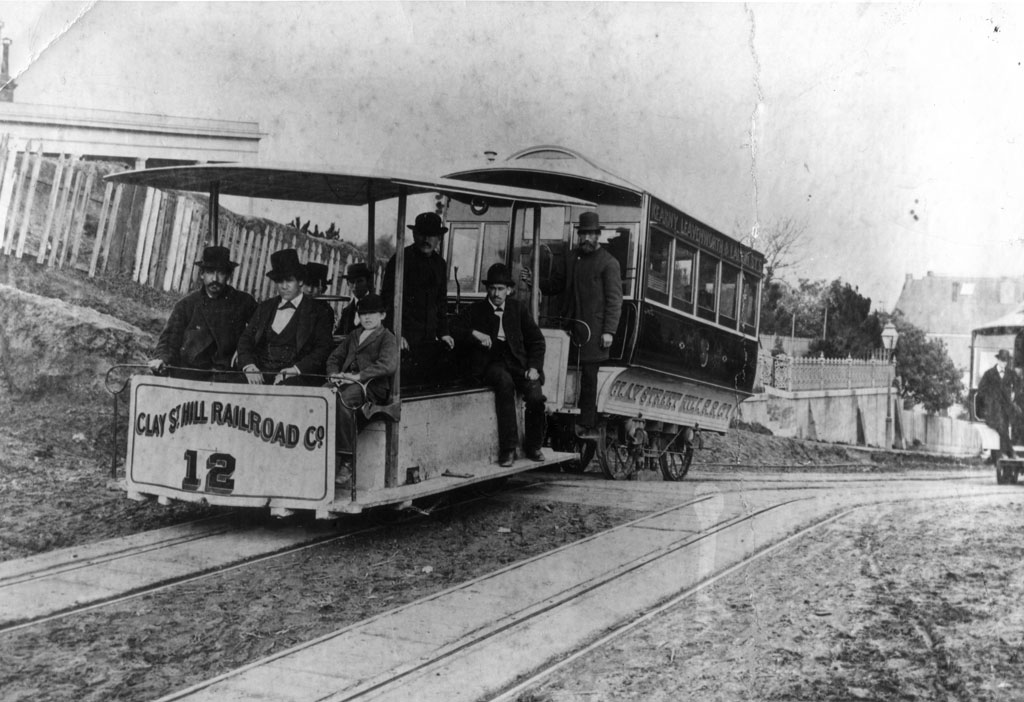In the wee hours of August 2, 1873, Andrew Hallidie gripped the first street cable car in history over a precipice on Clay Street. Hallidie, a Scots immigrant who had extensive expertise in “wire rope” technology to move buckets of ore above ground in the state’s mining district, had applied his knowledge to pull people in little cars up hills that horses couldn’t climb. His franchise for the line had technically expired at midnight on August 1, but there were delays, including the refusal of the gripman he hired to operate the car after taking a look down the hill. So Hallidie did it himself. Apparently, no one noticed that he missed his franchise deadline and even today, the anniversary date is commonly given as August 1. (That first operation, incidentally, was a test. Paying passenger service didn’t start until September 1.)

Hallidie’s invention soon swept the world because even with high capital costs, cable cars were twice as fast as horse-drawn streetcars even on level ground, meaning you could carry more passengers per day. Also, operating costs were lower (horses were very expensive to maintain). But the cable revolution only lasted 15 years until Frank Sprague’s development of the electric streetcar in 1888, significantly faster than cable cars and cheaper to build and run. Cable systems around the world were quickly converted, leaving only those serving steep hills. Buses ultimately took over almost all of those as well. By 1957, San Francisco’s was the only traditional street cable system left in the world. (Check out differences between cable cars and streetcars.)
Today, there’s no special bell serenade or even the clicking of the cable to mark the 147th birthday, because the cable cars are silent, shut down since March because of Covid-19. Muni officials have ruled out a comeback anytime soon, probably until an effective vaccine is deployed, because there is no way to shield the operators from passengers, as is being done on buses and light rail vehicles (and we hope soon on the shut-down historic streetcars as well). Indeed, it is possible that the silenced bells and cables could last longer than any previous shutdown.
In their entire 147-year history, there have only been two extended cable car shutdowns: one, following the 1906 earthquake and fire, which decimated cable car machinery and incinerated many cars, lasted about a year; the other, the complete rebuilding of the system from the dirt up in 1982-84, lasted about 18 months. Given the resurgence and persistence of the virus, the little cars could be off the street longer than that.
We hope not; instead we hope the 148th birthday can be celebrated on the cars themselves, climbing ‘halfway to the stars’! Meanwhile, we will be celebrating cable car history here, with a series of posts on little-known aspects of the little cars.